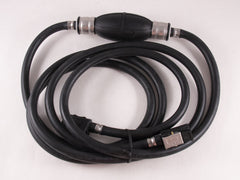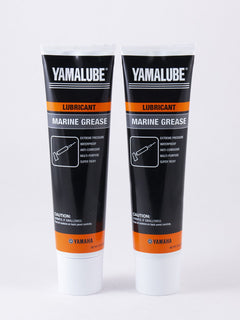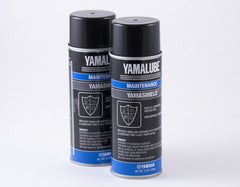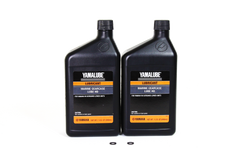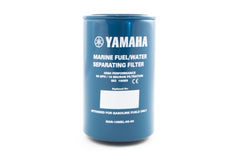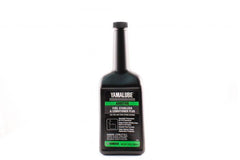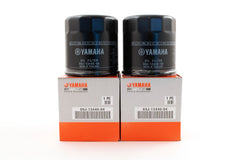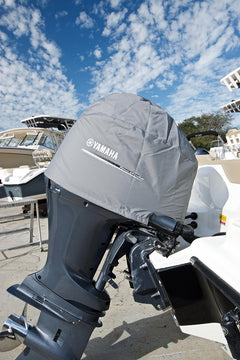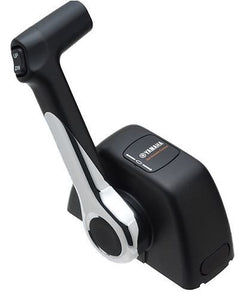Yamaha
Yamaha 63P-11191-00-9S - Cover, cylinder head 1
$248.29 USD$270.50 USDUnit price /UnavailableYamaha
Yamaha 63P-11110-11-9S - Cylinder head assy
$3,315.75 USD$3,406.85 USDUnit price /UnavailableYamaha
Yamaha 63P-11110-10-9S - Cylinder Head Assembly
$3,315.75 USD$3,406.85 USDUnit price /UnavailableYamaha
Yamaha 62Y-W009B-09-9S - Cylinder block assy (d:16mm)
$3,684.84 USD$3,786.15 USDUnit price /UnavailableYamaha
Yamaha 62Y-11191-01-9S - COVER, CYLINDER HEAD 1
$109.13 USD$121.80 USDUnit price /UnavailableYamaha
Yamaha 62Y-11111-20-1S - Head, cylinder 1
$1,652.85 USD$1,698.25 USDUnit price /UnavailableYamaha
Yamaha 62Y-11111-12-94 - Head,cylinder 1
$1,728.94 USD$1,776.45 USDUnit price /UnavailableYamaha
Yamaha 61N-11191-01-1S - Cover, cylinder head 1
$51.86 USD$57.90 USDUnit price /UnavailableYamaha
Yamaha 60V-11192-00-1S - Cover, cylinder head 2
$154.52 USD$168.45 USDUnit price /UnavailableYamaha
Yamaha 60R-WE09B-00-1S - Cylinder block assy
$1,733.02 USD$1,780.65 USDUnit price /UnavailableYamaha
Yamaha 60C-W009B-07-9S - Cylinder block assy (6d8 brg)
$5,442.06 USD$5,591.75 USDUnit price /Unavailable
Yamaha Cylinder Heads & Engine Blocks
Built for compression, combustion, and control — from idle to wide-open throttle.
When it comes to restoring or maintaining your Yamaha outboard motors, few components matter more than the cylinder head and engine block. These core parts sit at the heart of your engine — responsible for compression, combustion, cooling, and power delivery.
At YamahaOnlineParts.com, we stock OEM replacements designed specifically for your Yamaha outboard model. These aren't just any engine internals. Yamaha uses high-quality die-casting methods to craft each block and cylinder head to exact tolerances, helping your outboard run cleaner, cooler, and more efficiently — season after season. If you are wondering how to maintain your Yamaha outboard motor, it is likely that you can find the answers you need in our blog.
We also regularly release new helpful resources like:
- Yamaha Outboard Engine Schematics
- Will DIY Maintenance and Repairs Void Your Yamaha Outboard Warranty?
TL;DR
Need a replacement engine block and heads for your Yamaha outboard? YamahaOnlineParts.com offers OEM die-cast cylinder blocks and heads built for long-term durability, tight tolerances, and marine performance.
What do the engine block and cylinder heads do on a Yamaha outboard?
Your engine block houses the pistons and cylinders. The cylinder head sits on top of the block and holds components like spark plugs, camshafts, and valves. Together, they control the combustion process, manage heat distribution, and maintain proper compression — all critical for dependable outboard performance.
Searching for replacements?
If you're looking for replacement engine blocks and heads for your Yamaha outboard, you’re in the right place. These parts aren’t just structural — they’re essential. A cracked cylinder head or a worn engine block can cause everything from low compression to full-on engine failure. That’s why every OEM part we carry is built to Yamaha’s factory specs and tested to handle the harsh marine environment.
Spark Plug & Compression Maintenance Tips
Changing your spark plugs and checking compression should be part of your 100-hour Yamaha outboard service. Here’s the short version:
- Remove the plastic cover and note which plug goes where
- Inspect each plug for oil, water, rust, or carbon buildup
- Use a compression gauge (or have a technician test each cylinder)
- When replacing plugs, apply a drop of oil to the threads — but don’t get any on the electrodes
- Torque to 18–21 ft. lbs. and reinstall in the correct order
A clean NGK branded spark plugs with no moisture or fouling? That’s a good sign your cylinder head is doing its job.
What if there’s water in the engine block?
It’s not always obvious — but water in the oil is a red flag. First thing to check? The thermostat.
A stuck-open Yamaha thermostat(s) can prevent the engine from reaching optimal temperature, causing condensation to form inside the block. Over time, this moisture builds up in the oil. If your engine is running cooler than usual or if your dipstick shows a milky residue, it’s time to inspect (and probably replace) the thermostat.
Quick test:
- Remove the oil cap and look for water droplets
- Pull the dipstick and check for moisture or discoloration
If the block is cracked or the cylinder head is compromised, water might be seeping in. Always start with the thermostat — but be prepared to inspect the full system.
Leakdown Testing 101
Want to get a deeper look into your cylinder health? A leakdown test can help identify:
- Cracked cylinder heads
- Worn piston rings
- Leaky valves or gaskets
- Internal air or fuel leaks
It’s a bit more advanced than a standard compression test, but it gives you a better idea of what’s really going on inside your engine.
If you’re DIY-ing the leakdown test:
- Remove spark plugs
- Turn each cylinder to top-dead-center
- Connect the leak-down tester and listen for leaks
- Compare results between cylinders — anything over 10% variance may be worth a second look
FAQs
→ What do the engine block and heads do on a Yamaha outboard motor?
The block houses pistons and moving internals, while the head holds spark plugs and camshafts. Together, they manage combustion, compression, and cooling.
→ When should I replace my Yamaha outboard engine block or cylinder head?
If your engine overheats, loses compression, or shows visible cracks near the head gasket, it’s time to replace those components. Always choose OEM parts for best results.
When to Replace & Why OEM Matters
OEM Yamaha cylinder heads and engine blocks are made for one purpose: to fit your motor perfectly and perform under pressure. If you’re seeing symptoms like:
- Overheating
- Poor fuel economy
- Low compression
- Coolant leaks
- Cracked gaskets
… don’t wait. Address the issue early, and choose OEM parts to avoid rework, guesswork, or misfitting components.
Whether you’re a seasoned marine tech or just learning your way around outboard maintenance, installing the right engine block and cylinder head is key to long-term performance. All parts listed here are Yamaha OEM-certified, built to endure the harshest conditions, and trusted by boaters worldwide.
Browse our full selection of Yamaha OEM cylinder heads and blocks for your exact engine model.s.


















